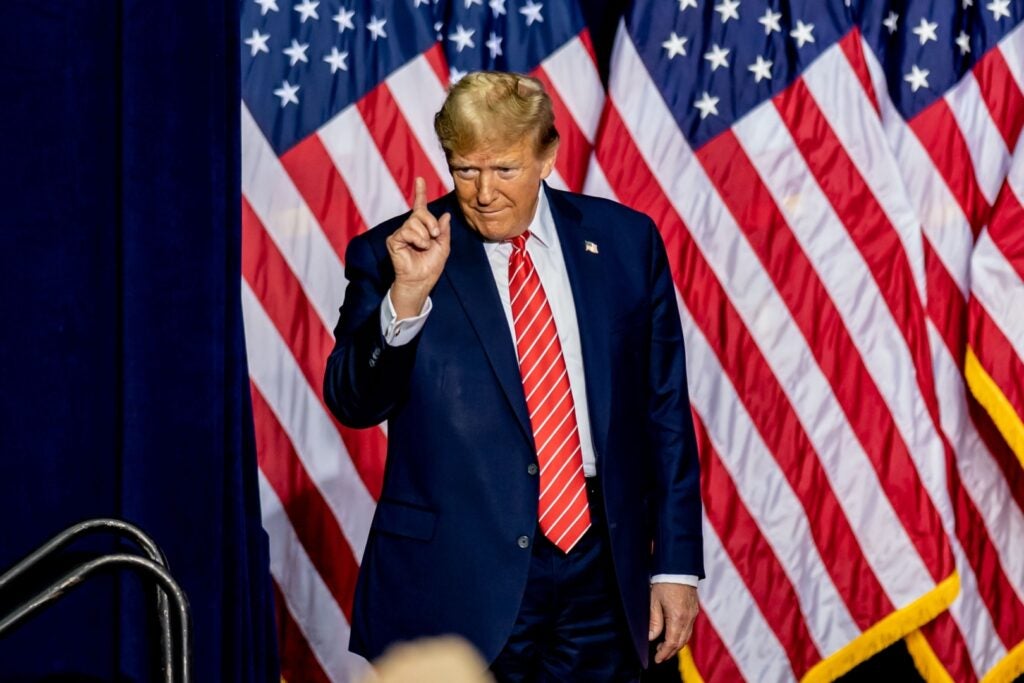
President Donald Trump‘s foreign policy legacy will be studied for years, but it has diverged sharply from the business-minded principles he outlined in his memoir and bestseller “The Art of the Deal.”
While these tactics might seem puzzling to some, geopolitical strategists, like BCA Research’s Chief Strategist Marko Papic, have identified patterns that can help explain Trump’s approach.
According to Papic, the president’s framework can be summarized as “7 Steps of Maximum Pressure.” The model is not designed for subtlety but for strategic theater aimed at reshaping negotiation dynamics through spectacle, escalation, and sudden reversals.
Step 1: Ask For The Moon!
Whether stating that Mexico would pay for a border wall through remittances or taxes or asking Ukraine to repay $500 billion for prior aid through a mineral resource deal, Trump typically opens negotiations with maximalist demands.
Unrealistic? Certainly. Strategic? Perhaps. As Papic would argue, it’s about moving the Overton window – the range of subjects publicly acceptable to the mainstream population at a given time.
Step 2: Whip Out Your Big… Button!
During his first term, Trump used bombastic threats to cow adversaries, famously tweeting, in January 2018, that his nuclear button was “much bigger” than North Korea’s.
Later that same year, Trump suggested that U.S. support for Taiwan could be reevaluated if China failed to make “real concessions” on trade. His first “trade war” with China wasn’t just about soybeans and steel. It was designed to show that the U.S. had a massive “button” in the form of its consumer market, which China depends on far more than vice versa.
Step 3: Punch Someone In The Mouth!
“When the world doubts you, do it!” When the external environment doubts the resolve, Trump has to demonstrate that threats are real.
In 2020, as tensions escalated with Iran, Trump authorized a drone strike that killed Qasem Soleimani, Iran’s most powerful general and head of the Quds Force. The strike occurred at Baghdad Airport without prior notice to Congress or allies.
Just three months into his second term, Trump made headlines by imposing “reciprocal tariffs” and tanking the global equity markets. “Trump must take a hard line on tariffs as that is the only way for them to be an effective negotiating tool,” Papic said when Trump took office, anticipating that this step would, eventually, take place, the Irish Times wrote.
Step 4: Break Bread, Make Friends!
After shocking the system, it is time to alleviate the pressure. Trump sits down at the table, acts magnanimously, and starts negotiating. This approach is both public relations and tactical diplomacy, designed to build leverage while showing a willingness to make a deal.
Thus, after calling Kim Jong-un a “Little Rocket Man” and threatening to rain “fire and fury,” Trump pivoted to peaceful negotiations. He invited Kim to a summit in Singapore, marking the first-ever meeting between a sitting U.S. president and a North Korean leader. In a complete turnaround, he went from threatening nuclear war to shaking hands and calling Kim “very talented.”
According to Palinuro Capital’s CIO Alfonso Peccatiello, Trump’s slashing of Chinese tariffs back to 30% is the latest example of Step 4.
Step 5: Leave The Bride At The Altar!
After the Singapore summit and months of symbolic progress, Trump was set to sign a deal with Kim Jong-un during their second meeting in Hanoi. The world’s media were gathered, and expectations were high. And then, Trump walked away.
“Sometimes you have to walk,” Trump told reporters. It reinforced that he wouldn’t sign anything and wasn’t afraid to kill the deal.
In February, Trump nearly finalized a deal with Ukraine. Still, at the eleventh hour, during Volodymyr Zelensky‘s visit to the White House, he blew up the process, accusing the Ukrainian leader of “gambling with World War III.”
This step is the most chaotic and calculated stage. Just before the deal is ready, Trump sabotages it, often for no immediate reason. Papic believes it is about extracting final concessions, regaining control of the narrative, and keeping the other party emotionally off-balance.
Step 6: Kiss And Make Up!
During his first term, Trump called NAFTA “the worst trade deal ever made.” He threatened to rip it up entirely (Step 1), imposed tariffs (Step 3), and repeatedly stormed out of talks or imposed sudden deadlines (Step 5). But by late 2018, he returned to the table, negotiated the United States-Mexico-Canada Agreement (USMCA), and called it a “historic breakthrough.”
USMCA was modernized NAFTA, with updates concerning intellectual property and digital trade.
After abruptly walking away from a Ukraine security and aid framework in February (Step 5), Trump expressed willingness to return to the table, praising Zelensky’s effort to reach out through a letter. By softening his tone and offering a fresh start, Trump regained narrative control and made himself look diplomatic, without making material concessions. This step concerns owning the reset and seizing the moment to dictate final conditions.
Step 7: Make A Deal!
After a long renegotiation and numerous threats to withdraw from NAFTA entirely, Trump inked the United States-Mexico-Canada Agreement (USMCA) and declared it “the most important trade deal we’ve ever made.” The ceremony was grand, with flags, photo ops, and statements of mutual admiration.
Despite parallels with NAFTA, Trump framed the deal as a revolutionary shift. The power wasn’t just in the deal itself but in the declaration of dominance.
While not officially finalized (yet), all signals point to Trump preparing to seal a new military and aid framework with Ukraine and key European allies — likely under a newly branded “Responsibility Pact” or similar moniker.
This deal stands out from the frame regarding the now signed but largely unimpressive minerals deal, which is currently at Step 6, as Trump re-engaged diplomatically earlier this month. Once it concludes, he will likely frame it as the final agreement as a product of his unique leadership.
With Step 7, the maximum pressure model comes full circle. This isn’t chaos, it’s a strategy of dominance, risk, and perception management. Papic’s model doesn’t just describe Trump’s behavior — it explains how he weaponizes volatility to extract wins.
Read Next:
Photo: Shutterstock


